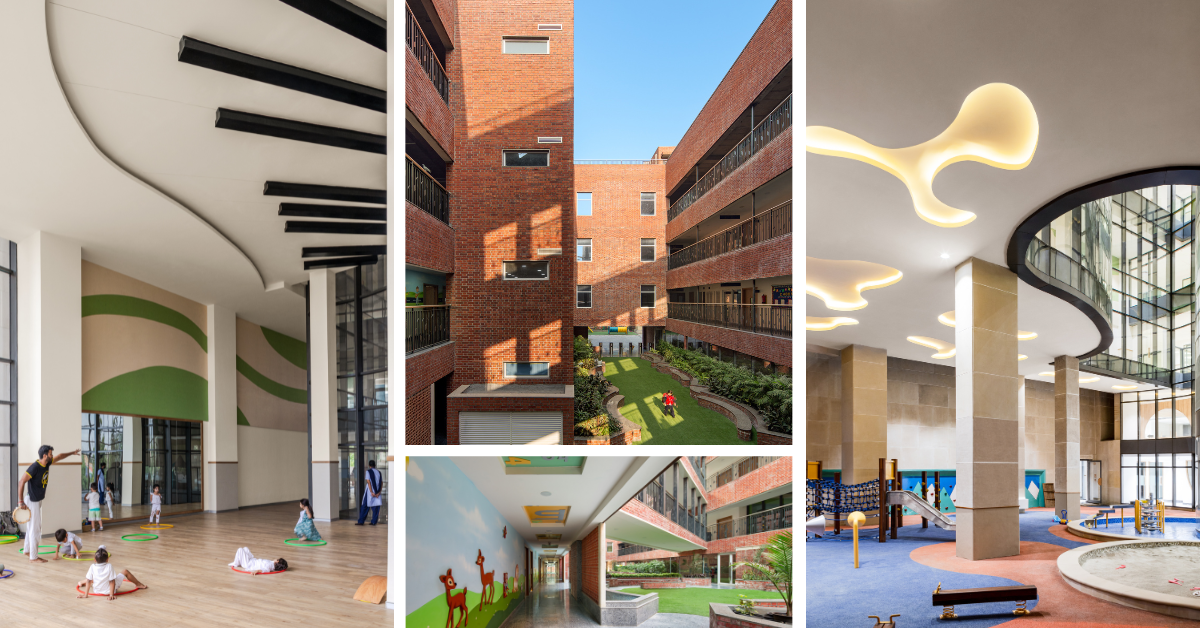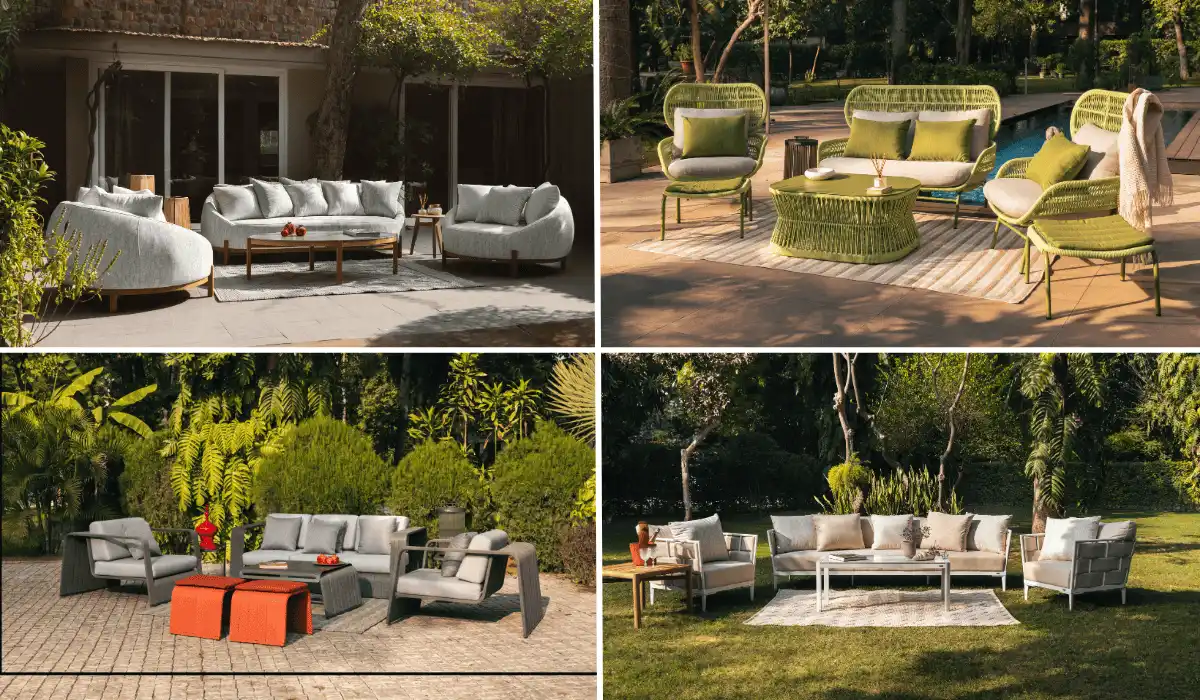Educational Space Design in Dense Urban Settings
Twenty-two Indian cities house more than 16,500 people per kilometer–among the most densely populated cities in the world. With more than half of India’s population projected to live in urban areas by 2050, urban environments in India will only be getting denser. In such a context, building educational institutions away from the cities would deprive the vast majority of the population of accessing quality education. Apart from this, it would also rob the locals of multiple job opportunities. Moving schools and other educational institutes away from the cities is not an option–we need to look at ways of designing them within our cities, tackling the challenges of urban density creatively.
Building schools on small parcels of land
Sites for educational institutions in cities are often small, irregularly shaped, and located far from open greens, either abutting noisy roads or in the middle of dense settings like housing. Accessibility, incorporating physical mobility, transportation options, pedestrian infrastructure, community integration, and universal design principles, remains crucial for schools built on small urban parcels.
These small parcels of land still need to cater to the extensive educational institute programs while accommodating ancillary requirements such as parking. With more people now accepting newer education systems, the institutes must also live up to the aspirations of parents and students.
Building upwards while maintaining efficiency and a sense of openness is a strategy that can help us create beautiful learning environments even in dense urban settings.
For a school in Mumbai, with a site area of less than one acre, we explored the idea of breaking down vertical volumes into horizontal silos of a few floors catering to a particular age group, creating communities of students. Each community only needs to move within these zones–cutting down circulation time and reducing the relative scale of the built mass. Each of these zones, with its own set of facilities, open spaces, and volumes with distinct characters, facilitates a sense of freedom and fun in student communities.

Navigating the changing Development Control Regulations for educational institutions
Dense urban environments are subject to strict development control rules concerning the Floor Space Index (FSI), building height, percentage of open space, etc. For example, a few years back, the minimum site area for a high school in Gurgaon would have been five acres with an FSI of 1, meaning that the built-up area would have been five acres. Today, however, the minimum site area is reduced to two acres with an FSI of 1.5, reducing the allowable built-up to three acres, while the number of students to be catered to remains the same.
The efficiency of the floorplate becomes paramount in such settings. We still need to create facilities that are not merely provided but enjoyed by kids. One way to do this would be to look for possibilities in the brief for spaces that can be used in multiple ways. Treating the height of spaces cautiously and avoiding redundant areas are some more strategies to improve the efficiency of the design.
Creating a sense of openness in learning spaces
Indian cities like Mumbai and Chennai manage to provide only around one square meter of urban open space per person when the ideal average recommended by WHO is nine square meters. Our designs for educational institutions need to evolve new methods of creating open spaces and develop a sense of openness if that is not always possible. This is crucial to ensure the physical well-being of students.
Since we cannot create courtyard spaces in a vertical typology, we can look at creating internal volumes that open up the floor and create visual connections within the building, akin to courtyards in traditional architecture. A well-proportioned atrium around three to four floors high can help achieve a sense of openness for the community of kids utilizing those floors. Curvilinear volumes and high ceilings can also be strategically incorporated to accentuate openness.
We can also look at ways of sharing open spaces with the residents of the city–playgrounds near the school campus could be utilized by students and residents at different times during the day, or a nearby municipal ground could function as a playground for kids.

Incorporating nature into the campus
Highly urbanized environments seldom leave space for vegetation and natural landscapes, which are crucial to creating good learning environments. Designing buildings that look inward at landscaped courts is a way we can bring nature to the campus. This is a strategy that allowed HRM School in Delhi to be a calm oasis for learning in a busy neighborhood.
Incorporating natural elements and materials into the interiors by creating green facades or vertical greens within the atriums are some more strategies for designing greener educational campuses. These strategies must be complemented with passive climate-response strategies that optimize natural light and ventilation in all spaces. Creating terraces on lower levels and tapering the buildings as we move upwards can allow us to accommodate parking and other requirements while creating green spaces for students on higher levels. The terraces can be designed to act as a second ground for a community of students. In Vedanya School, Gurugram, the activity terrace facilitates multiple functions as required–a break-out space, a play area, and a space for nature-based learning activities like farming and hydroponics.


Refurbishing old institutional buildings
An important question we need to ask today is whether we need new buildings. In many cases, refurbishment of old institutional structures is enough to adapt to the newer requirements posed by changes in educational pedagogy. We need to shift the focus to optimizing existing spaces for better functionality, energy efficiency, and users’ well-being.
For instance, at GD Goenka Junior and Senior School in the Vasant Kunj area of Delhi, we refurbished the classrooms and common areas to re-prioritize the user’s needs. Bigger openings were introduced in the Senior School classrooms, and glass panels were incorporated in the common areas and corridors to bring in more natural light. Parapet walls with interactive cut-outs and niches are provided in the Junior School to fix age-appropriate play panels, making the interstitial spaces like corridors conducive to interaction. The use of textures, colors, and natural materials in the interiors tailors the environment further for experiential learning and social interaction.
Designing educational spaces in dense urban settings poses multiple challenges, but it is crucial to offer good quality education to city dwellers at their convenience. With rising urbanization rates, such situations are only going to rise. Approaching the design challenges creatively can help us create sustainable and nurturing learning environments for our future generations, even in the hearts of our busiest cities.
Vijay Gupta Architects
Visit: https://www.vga.co.in/
Email: info@vga.co.in

Biltrax Construction Data is tracking 31,000+ projects on their technology platform for their clients.
Get exclusive access to upcoming projects in India with actionable insights. Gain a further competitive advantage for your products in the Indian Construction Market.
Visit www.biltrax.com or email us at contact@biltrax.com to become a subscriber and generate leads.
Disclaimer: The information herein is based upon information obtained in good faith from sources believed to be reliable. All such information and opinions can be subject to change. Furthermore, the image featured in this article is for representation purposes only. It does not in any way represent the project. If you wish to remove or edit the article, please email editor@biltrax.com.
Discover more from Biltrax Media, A Biltrax Group venture
Subscribe to get the latest posts sent to your email.






















